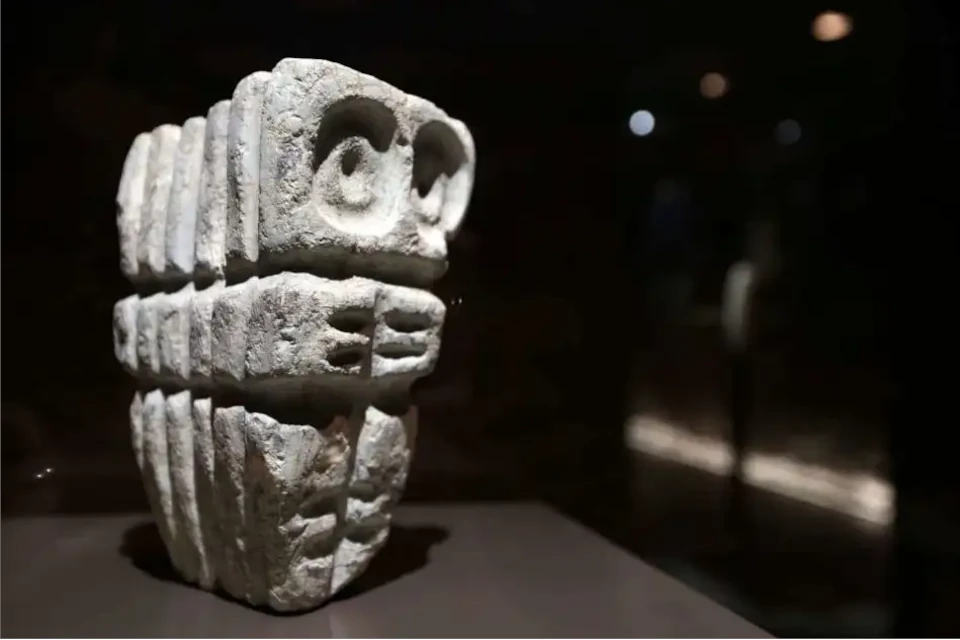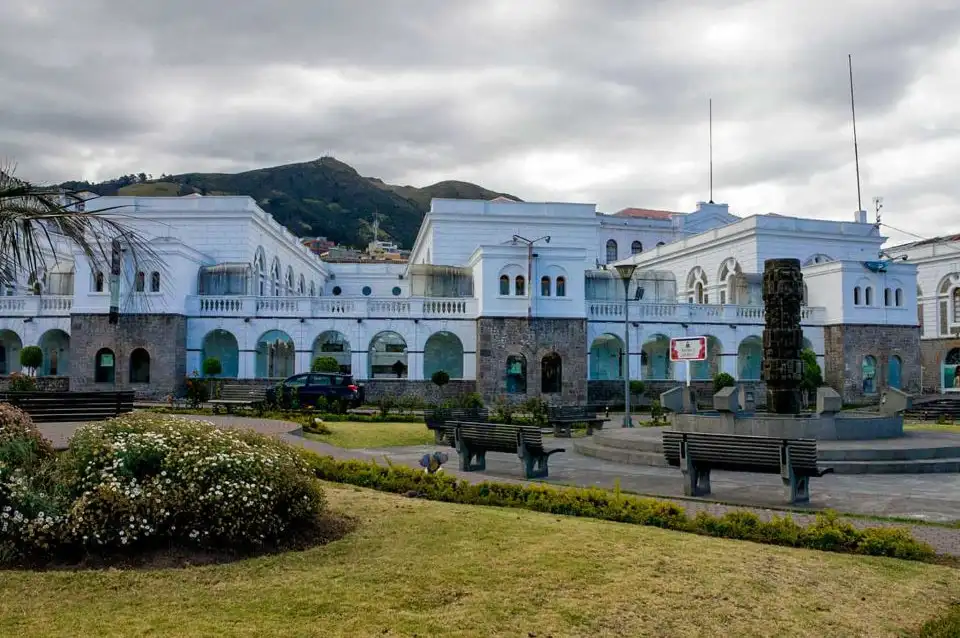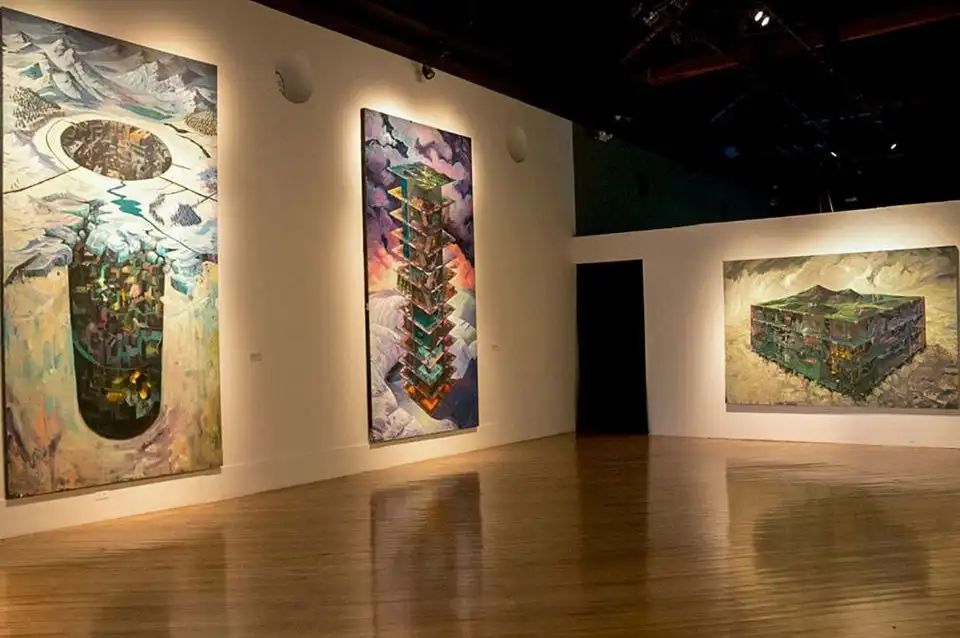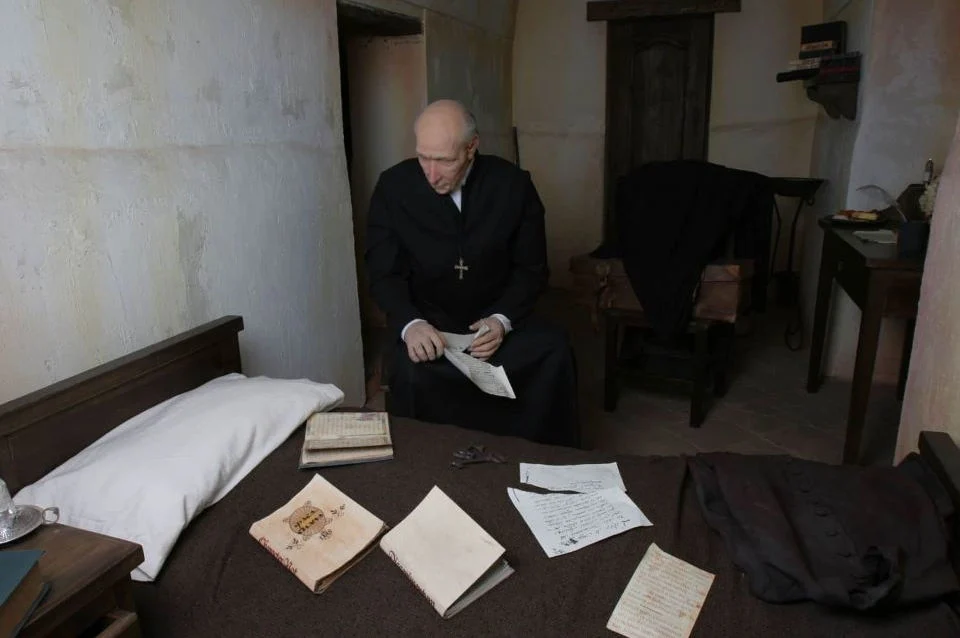Whatever your interests or age, in Quito’s Old Town you are sure to discover a museum that captures your imagination, and allows you to feel closer to understanding this complex and mesmerising metropolis. Here are some of Old Town’s best cultural museums.
As the first UNESCO World Heritage Site, Quito’s Historic Center is a museum in and of itself. Its coloured, colonial buildings slope up towards the winged Virgin Mary known as La Virgen del Panecillo, while magnificent churches, mansions, and plazas punctuate the streets, transporting you to a mysterious world from a long-forgotten era where you’ll find the best cultural museums in Quito’s Old Town.
Contained within the history-soaked walls is an encyclopedia of museums, each one playing their part, retelling the epic tale of the city and its culture. The Casa de Alabado, just around the corner from Casa Gangotena, is a brilliant place to dive into Quito’s pre-Columbian culture, while the Museo de la Ciudad reveals the secrets of other ancient societies, and how they impacted populations for generation after generation. The Architecture Archive and Museum of Ecuador shows how cultures developed through their buildings, and how these curiosities informed ideas of citizenship.
The Museo de Arte Colonial, Museo de Acuarela y Dibujo Muñoz Mariño, and the Centro de Arte Contemporaneo lead you on a path through Quito’s creative offerings from centuries ago to today.
To delve into the lives of some of Quito’s most influential women, visit the meticulously preserved Casa Maria Augusta Urrutia and the Museo Manuela Saenz, a celebration of one of the region’s first revolutionary feminists.
The Yaku Water Museum offers visitors the history of the city from the curious perspective of its relationship with the life-giving liquid, and for a surreal experience, the Wax Museum in Centro Cultural Metropolitano recreates one of Quito’s grisliest moments in disturbing detail.
Museo de la Ciudad, Garcia Moreno y Rocafuerte
Quito’s oldest building is the ideal setting for an homage to its melting pot of cultures throughout the generations – a concept that is key for grasping the true fibers that bind the city in the 21st century.
Functioning as a sanatorium from 1565 until 1974, the Antiguo Hospital San Juan de Dios saw more than 400 years’ worth of patients come and go, becoming an icon for the city as its residents breathed life into its own story.
Today, you can find permanent exhibitions on Quito’s ancient societies, the city’s relationship with the Spanish colonial regime and the museum’s origins as Quito’s first hospital. There are also temporary exhibitions and programs, celebrating the idiosyncrasies of the city, as well as showcases of contemporary and traditional art.
Casa Maria Augusta Urrutia, Garcia Moreno, between Sucre and Bolivar
There’s nothing quite like nosing through the home of a local to get under the skin of a city.
And while Maria Augusta Urrutia, the owner of this rose-colored 19th century mansion might be long gone, her possessions, furniture and art are perfectly preserved in all their former Art Nouveau glory.
A dame of the Quito aristocracy, Maria Augusta was orphaned in 1904 at the age of three and bequeathed numerous beautiful and stately properties. Her husband Camilo Egas also died young, and the couple never had children, so the philanthropic woman left her home to charitable causes, allowing it to be opened as museum after her death in 1987.
The home itself is a masterpiece of grand urban living, all sweeping velvet curtains, shell-encrusted chairs, stained-glass windows and four-posted beds, which makes for delightful snooping, as your imagination conjures scenes of the refined mid-century society. Two sun- dappled patios with stone fountains divide the home, casting a dreamy light on your visit.
Also on display in the museum is Maria Augusta’s collection of 78 paintings by artist Victor Mideros, a prominent Quito impressionist who was sometimes commissioned by the aristocrat for works including an acclaimed series of four archangels.
Maria Augusta’s legacy has shaped Quito in ways that she would never have foreseen: her other great donation to the city was her hacienda to the north of the Historic Centre.
This land would later become La Carolina Park, one of Quito’s most loved and most frequented green spaces, where locals come to play ecua-volley, soccer, and tennis, and to hang out with their families on sunny weekends.
Yaku Water Museum, El Placer Street
The view from the Yaku Museum alone – almost looking into the eyes of the winged Maria of the Panecillo statue as well as Casa Gangotena and the icons of the Old Town – makes it worth a visit.
Its modern design and steel-framed architecture, fronted by pools of trickling fountains, is also a refreshing change of scene in the colonial city.
The museum is located on the slopes of the Pichincha Volcano, where ancestral societies had ceremonial baths. Fittingly, Yaku, which means “water” in Kichwa, is a celebration of the value of water to the various aboriginal communities of Quito, and educates on ways to protect the environment.
The centre also explores ways in which the city dealt with water purification in the past, with hands-on activities and experiments for adults and children of all ages, water-dwelling creatures, and a pathway through a magical forest displaying the wonder of water in Andean wildlife.
Museo de Arte Colonial, Cuenca y Mejica
This spectacular collection of art from the colonial era takes you on journey through the city’s rich cultural heritage, displaying famous sculptures and paintings of the Quito School.
Among the white-washed passageways and arches surrounding the serene courtyard of the restored 17th-century building are works by artists including Miguel de Santiago and Bernardo de Legarda.
Prominent in the collection is Manuel Chili, the Indigenous sculptor better known as Caspicara – or “Wooden Face” – whose major religious baroque-style works exemplified the 18th century movement in the Andes. Among his greatest fans was Eugenio Espejo, one of Ecuador’s leading intellectuals (as well as Quito’s first journalist and hygienist).
The museum is located directly opposite the stunning, gold-encrusted Iglesia de la Merced, making for a perfect morning of Quiteño culture.

Casa de Alabado, Cuenca y Bolivar
Casa de Alabado is packed with Pre-Columbian artefacts and mysteries and requires multiple visits to truly appreciate the extent of its wonder. Housed within a beautiful 16th century mansion just steps from Casa Gangotena, the collection features an awesome range of objects and artwork from ancestral societies, from the tools used by Shamans in ancient rituals and fertility icons, to simple chairs and agricultural tools.
The overall effect is a startling insight into the daily and spiritual lives of this intriguing community.
The slightly sinister faces and bodies of the figures moulded in clay create a mysterious and reverent atmosphere in the museum, while the Mundo del Arte permanent collection displays some of the most beautiful and symbolic items in existence.
Within the stately mansion housing the collection is a sun-kissed patio, ideal for a post-visit coffee.
Centro de Arte Contemporaneo, Montevideo y Luis Dávila
Located in another fabulous heritage building, a grand former military hospital, the CAC is a cultural space where you will find some of the country’s most cutting edge artistic talent. With its position on the San Juan hill, the museum offers another perspective of the sprawling Old Town.
Curated here is an intense program of exhibitions, activities and workshops, as well as presentations by musical and dance acts. The action takes place within five different areas, from light-filled pavilions to palatial courtyards.
The centre sets out to smash paradigms, allowing Ecuadorians to fashion their own branch of contemporary art, from painting and drawing to illustration and 3D technology.
Surrounded by the freshest creatives, the CAC is also a cool spot for a coffee as you easily while away the hours, and if you’re a fan of pop and electronic music it’s well worth checking to see if they have any concerts programed.

Museo de Acuarela y Dibujo Muñoz Mariño, Junín y Almeida
A stroll through Junín Street in Old Town’s San Marcos neighborhood yields a treasure trove of bohemian nooks and crannies. Among these is the watercolour museum, where the works of renowned painter Oswaldo Muñoz Marino hang alongside other local artists. Oswaldo, who was considered to be Ecuador’s finest watercolour artist of the 20th century, died in February 2016 at the age of 92, leaving a tremendous creative legacy.
Befriended and respected by Latin America’s artistic elite, including Frida Kahlo, Diego Rivera, José Clemente Orozco, David Alfaro Siqueiros, Gabriela Mistral, Gabriel García Marquez, and Julio Cortázar, Oswaldo was known for brilliantly capturing the atmosphere in his pastel-toned works.
Apart from permanent collections and temporary exhibitions, the museum hosts workshops in watercolours and drawing for children, teens, adults, and seniors.
A fabulous watering hole just up the road is Café Dios No Se Muere, where the eccentric hosts serve up wines, beers, and New Orleans style food within the creaking building that holds plenty of its own secrets.

Manuela Saenz Museum, Junín y Montufar
A little further down, along the same street, the Manuela Saenz Museum celebrates the life and achievements of the political activist known as “libertadora del libertador” (the liberator of liberators).
The museum pays homage to a true underdog, who was largely forgotten in the story of Latin American Independence. She was one of the region’s first feminists.
Born in Ecuador, Manuela got together with the celebrated Simón Bolívar in Quito. The two became lovers and Manuela later went on to accompany Simón in his revolutionary exploits. Their efforts became legendary, especially in the Battle of Pichincha of 1822, which ensured the independence of Ecuador from Spanish colonialists.
Each of the three floors in this beautiful city home, is full of art, books, antique weapons, and other curiosities that belonged to Manuela, Simón, and their revolutionary compatriot Antonio José de Sucre.
It is also the place where one can view the letters exchanged by the lovers. This is where you, too, can free your inner revolutionary spirit!
Alberto Mena Caamaño Wax Museum located at the Metropolitan Cultural Center
The Metropolitan Cultural Center, built beside the gold-plated Church of the Society of Jesus (La Compañía) was always intended to serve an educational purpose. Throughout history, the building has hosted a great library, military quarters, convents, pharmacies, schools, a tobacco factory, prisons, and a cafeteria. The spaces were eventually dedicated to the Mint, the National Press, the National Museum, and a meeting room for Congress.
However, one of the most bizarre and shocking installations is the Albert Mena Caamaño Museum and its permanent exhibit “De Quito al Ecuador” (From Quito to Ecuador). It is here that wax figures bring to life the macabre massacre of August 2, 1810, in which the rebels of the 1809 uprising were assassinated by authorities when their compatriots attempted to free them. The scene is presented in a chilling manner in the very same room where the event took place, inspired by a painting created by César Villacres.
The emblematic Plaza Grande is just a few steps form the museum, where cafés nestled within the arches below the cathedral offer brilliant views and a base from which to observe the routine surrounding the presidential palace.

Architecture Archive and Museum of Ecuador, Junín y Ortiz Bilbao
Quito’s architecture can be confusing. There is a veritable smorgasbord of designs, from varying colonial creations, a gothic cathedral adorned with ghoulish Galápagos animals, and even nods to Art Deco. On hand to help you make sense of it all is the Architecture Archive Museum of Ecuador, a facility created by the Colegio de Arquitectos de Pichincha to document and study the architectural patrimony of the city and allow it to tell its own stories of urbanism.
Like several others of the city’s best attractions, the museum is located on Junín Street in the quaint San Marcos neighborhood, where architectural curiosities like the Santa Catalina Monastery, San Marcos Church and civic buildings with an important historic heritage are also found – not to mention eccentric bars and restaurants.
As well as being a space in which to discuss architecture and its implications for citizenship, the museum has a cultural program, including art workshops, music and dance, all created with architecture as a starting point.



